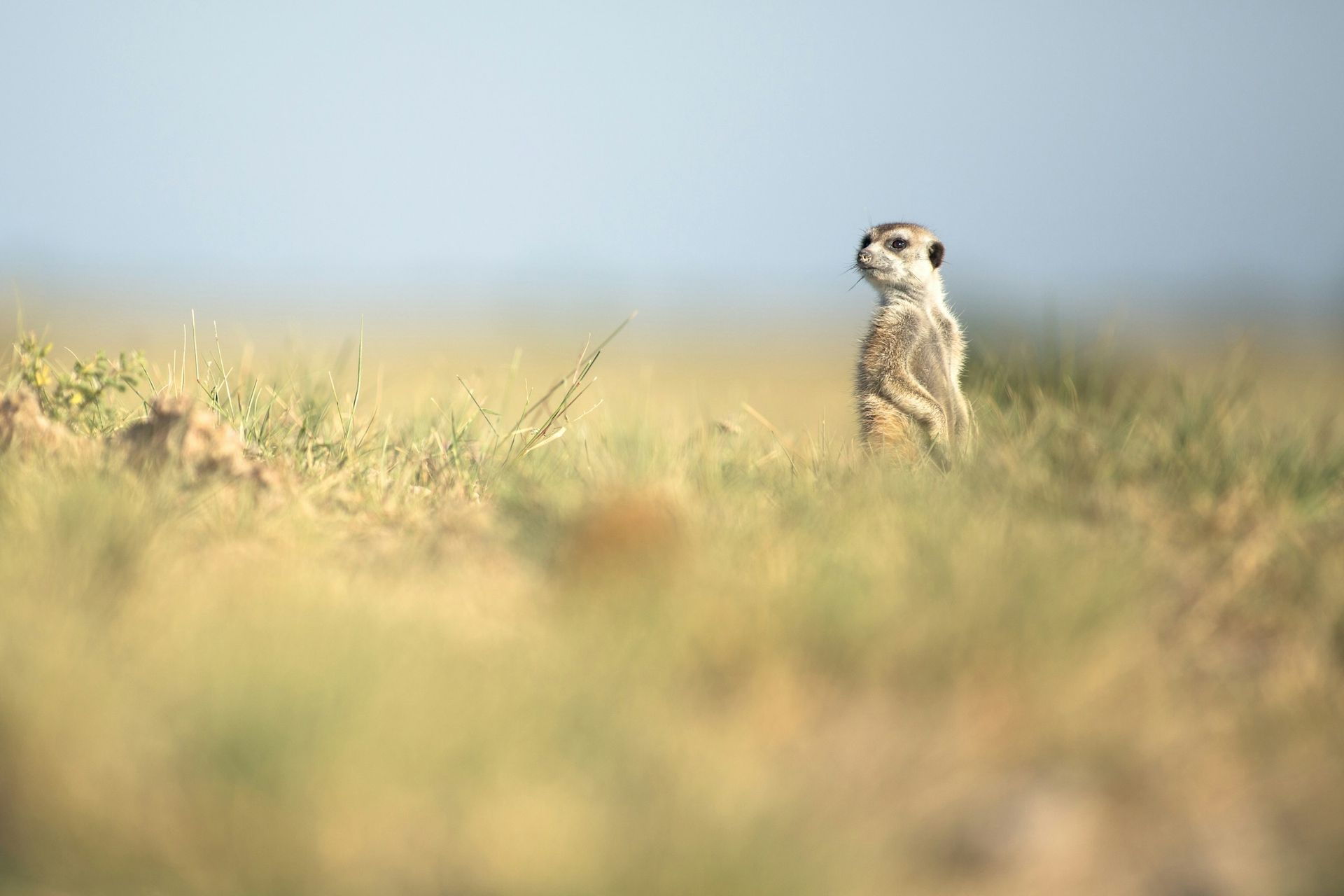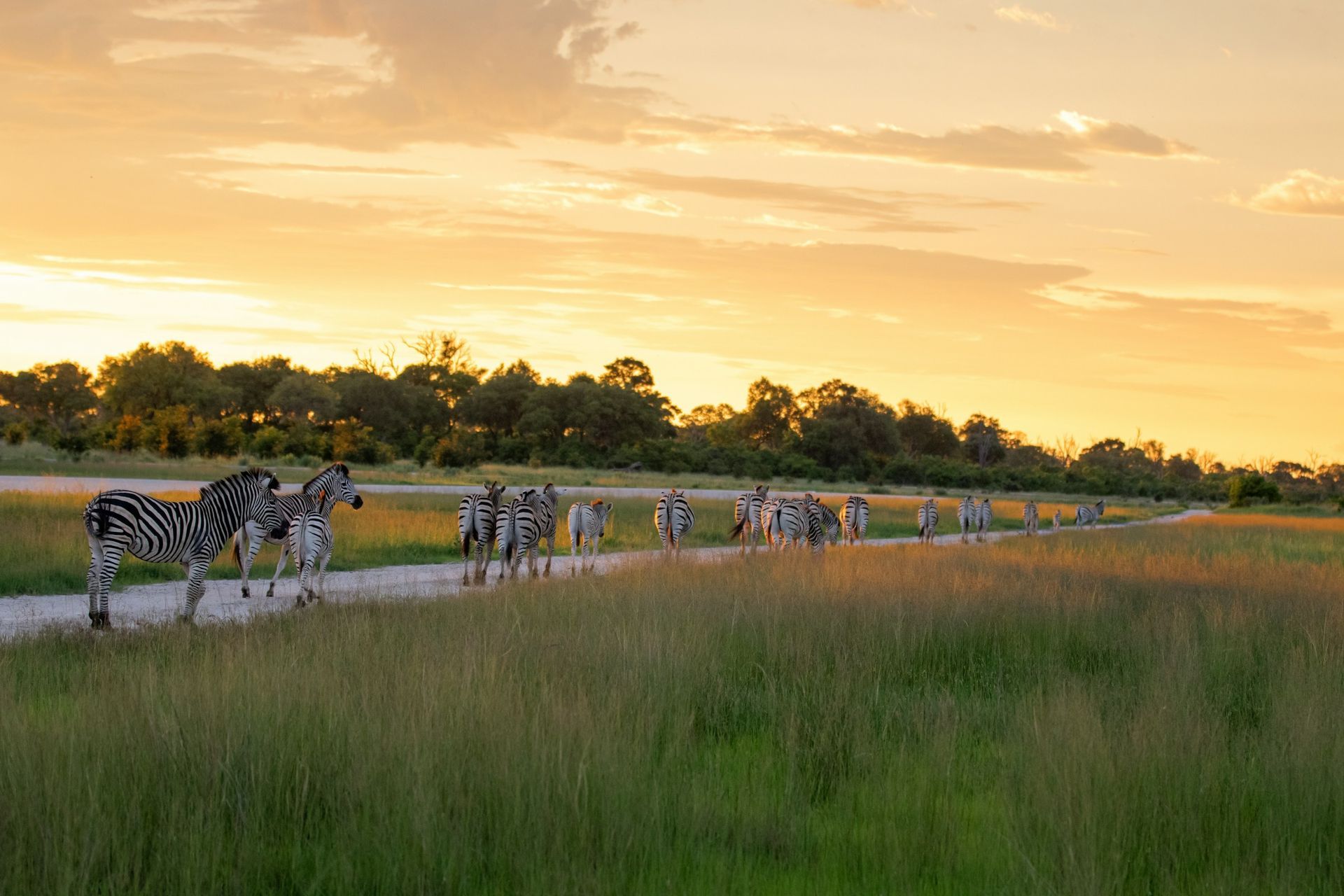botswana
botswana
botswana
Wild, vast and totally unforgettable
You don’t just go to Botswana. You feel it. You hear the slow-lapping water of the Delta, smell the dust rise off the pans, and see the shimmer of heat over the endless Kalahari. You watch elephants wade through the Chobe River at sunset, and you sit, quiet and still, while lions call out into the night.
At Ubon Safari, this is what we offer – not just luxury safaris, but journeys that linger. We know Botswana inside out, and we’re here to show you the wild heart of Southern Africa in a way that feels immersive, thoughtful and unforgettable.
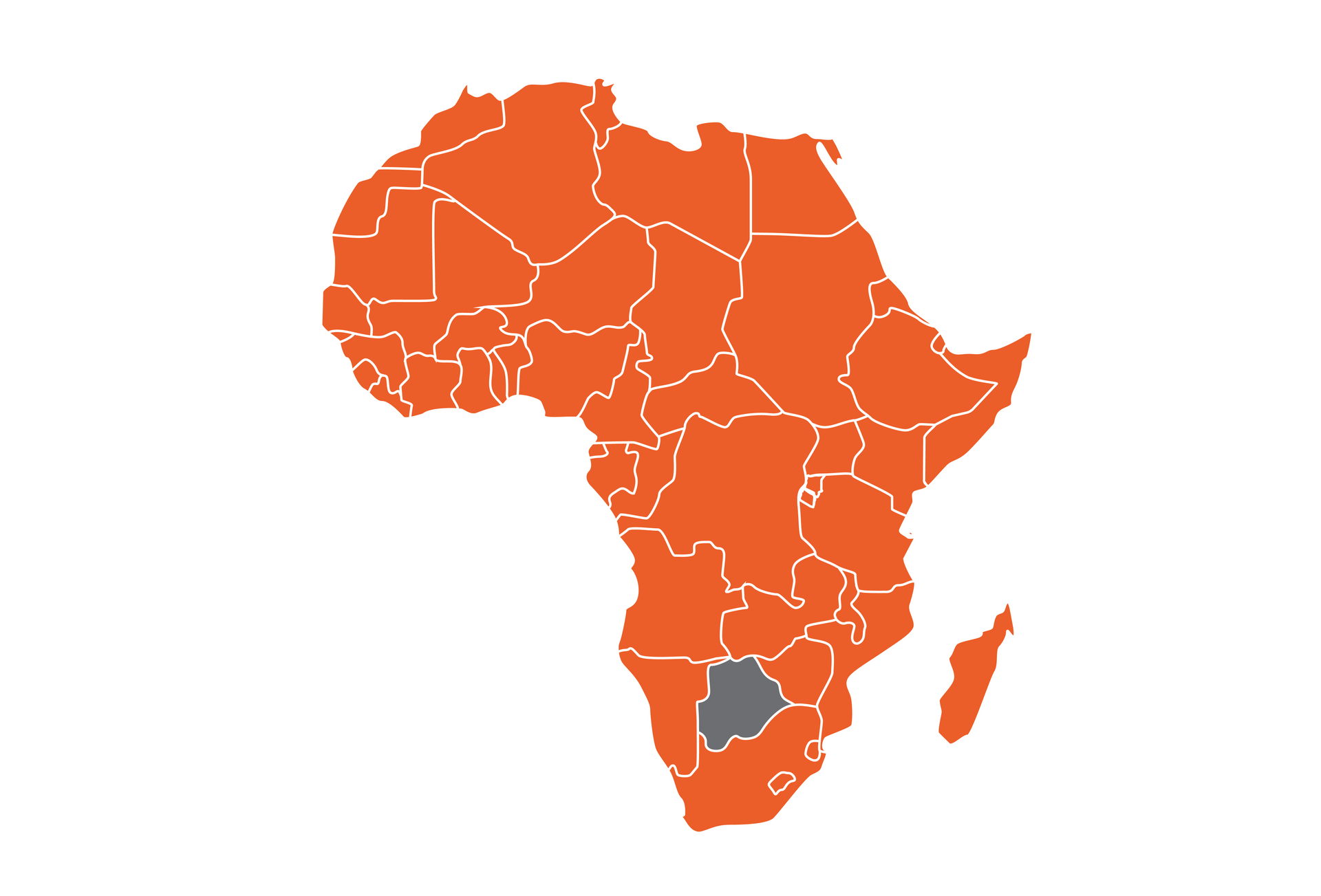
Wild, vast and totally unforgettable
You don’t just go to Botswana. You feel it. You hear the slow-lapping water of the Delta, smell the dust rise off the pans, and see the shimmer of heat over the endless Kalahari. You watch elephants wade through the Chobe River at sunset, and you sit, quiet and still, while lions call out into the night.
At Ubon Safari, this is what we offer – not just luxury safaris, but journeys that linger. We know Botswana inside out, and we’re here to show you the wild heart of Southern Africa in a way that feels immersive, thoughtful and unforgettable.
Wild, vast and totally unforgettable
You don’t just go to Botswana. You feel it. You hear the slow-lapping water of the Delta, smell the dust rise off the pans, and see the shimmer of heat over the endless Kalahari. You watch elephants wade through the Chobe River at sunset, and you sit, quiet and still, while lions call out into the night.
At Ubon Safari, this is what we offer – not just luxury safaris, but journeys that linger. We know Botswana inside out, and we’re here to show you the wild heart of Southern Africa in a way that feels immersive, thoughtful and unforgettable.
Why Botswana will stay with you
There are plenty of places in Africa where you can go on safari. But Botswana is different. It’s one of the few countries where conservation comes before mass tourism – where the animals always come first, and the landscapes still feel untouched.
It’s the kind of place where you might not see another vehicle all day. Just you, your guide, the tracks in the dust, and the feeling that anything could happen around the next bend.
And when night falls? This is a place where the stars don’t stop. Where you’ll sit around the fire listening to stories, the air crisp, the bush alive. Whether you travel in the dry season or the green, Botswana always delivers.

Why Botswana will stay with you
There are plenty of places in Africa where you can go on safari. But Botswana is different. It’s one of the few countries where conservation comes before mass tourism – where the animals always come first, and the landscapes still feel untouched.
It’s the kind of place where you might not see another vehicle all day. Just you, your guide, the tracks in the dust, and the feeling that anything could happen around the next bend.
And when night falls? This is a place where the stars don’t stop. Where you’ll sit around the fire listening to stories, the air crisp, the bush alive. Whether you travel in the dry season or the green, Botswana always delivers.

Why Botswana will stay with you
There are plenty of places in Africa where you can go on safari. But Botswana is different. It’s one of the few countries where conservation comes before mass tourism – where the animals always come first, and the landscapes still feel untouched.
It’s the kind of place where you might not see another vehicle all day. Just you, your guide, the tracks in the dust, and the feeling that anything could happen around the next bend.
And when night falls? This is a place where the stars don’t stop. Where you’ll sit around the fire listening to stories, the air crisp, the bush alive. Whether you travel in the dry season or the green, Botswana always delivers.

The Okavango Delta
Water, wildlife and wonder
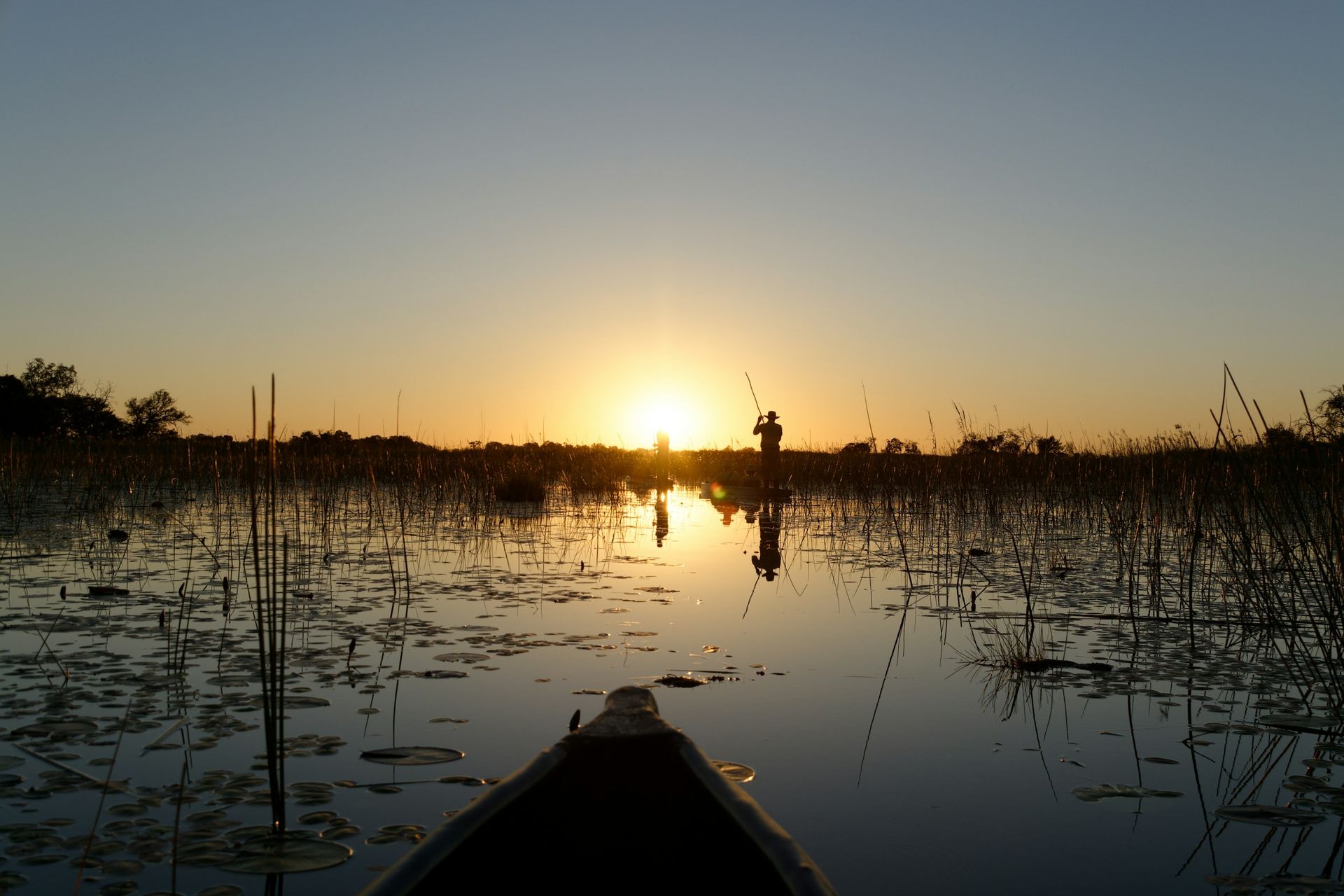
The Delta isn’t just a destination – it’s a living, breathing system of water, wildlife and wilderness. Each year, the floodwaters arrive like clockwork, breathing life into the land. It’s a strange magic: when the rest of Botswana dries out, the Delta comes alive.
Glide through the reeds in a mokoro, your guide poling silently while fish eagles call above. Watch elephants swim. Track leopards through riverine forest. Sleep in a tented camp with the sounds of hippos nearby.
This is one of the most extraordinary ecosystems on Earth – and it’s rewarding in every season, from the lush vibrancy of summer to the sparkling clarity of winter.
Best for: Boating, mokoro trips, birding, classic Delta game drives.
When to go: June–August for high water and best mokoro conditions; Sept–Oct for intense game viewing; November–April for green season beauty and brilliant birdlife.
Moremi Game Reserve
Where wildlife stories unfold
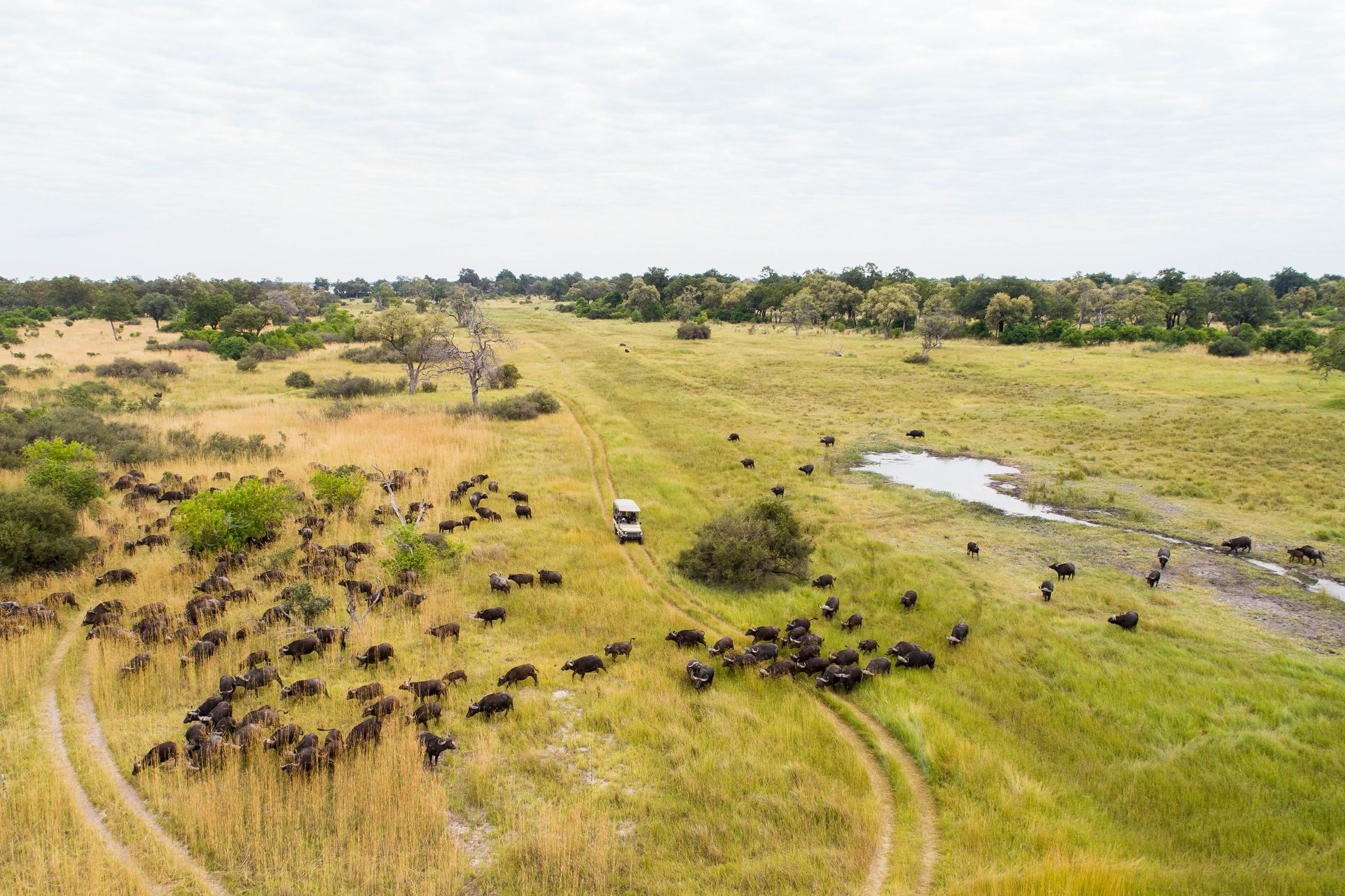
The Moremi is where you go when you want the full picture – predators, plains game, waterways and woodland. It’s got the drama, the beauty and the rawness that defines a great safari.
You might spend your morning watching a pride of lions wake up with the sun, and your afternoon drifting quietly past papyrus beds watching bee-eaters dart. And with over 500 species of birds recorded, you’ll want to keep your binoculars close.
This reserve, created by the local Batswana people, covers about 40% of the Delta. It’s as diverse as it is rich – and always full of surprises, no matter the month you visit.
Best for: The Big Five, painted wolves (African wild dogs), diverse birdlife, boat and open safari vehicle safaris.
When to go: May–November for dry season wildlife concentrations; December–April for green season calving, predator activity and excellent birding.
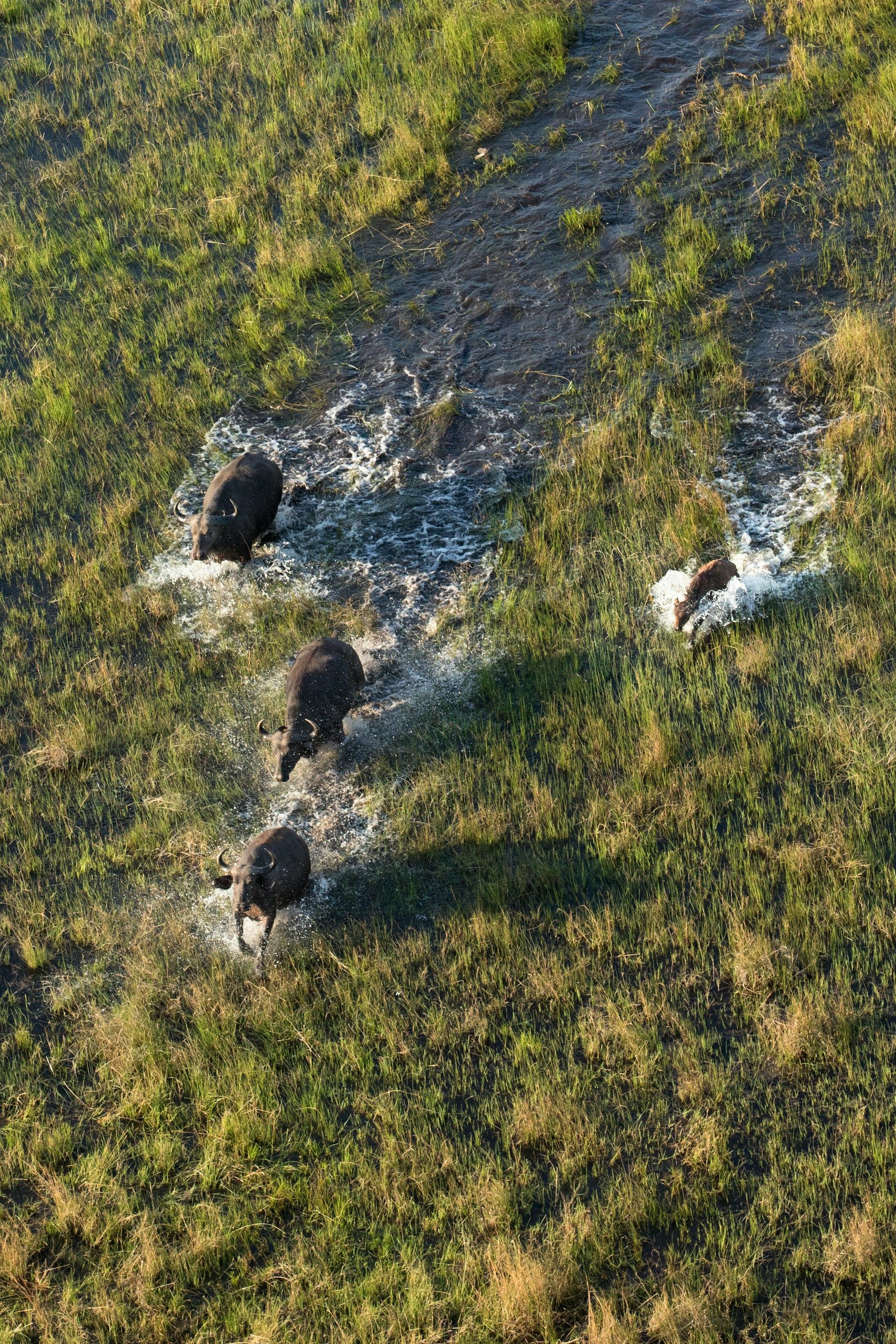
The Okavango Delta
Water, wildlife and wonder

The Delta isn’t just a destination – it’s a living, breathing system of water, wildlife and wilderness. Each year, the floodwaters arrive like clockwork, breathing life into the land. It’s a strange magic: when the rest of Botswana dries out, the Delta comes alive.
Glide through the reeds in a mokoro, your guide poling silently while fish eagles call above. Watch elephants swim. Track leopards through riverine forest. Sleep in a tented camp with the sounds of hippos nearby.
This is one of the most extraordinary ecosystems on Earth – and it’s rewarding in every season, from the lush vibrancy of summer to the sparkling clarity of winter.
Best for: Boating, mokoro trips, birding, classic Delta game drives.
When to go: June–August for high water and best mokoro conditions; Sept–Oct for intense game viewing; November–April for green season beauty and brilliant birdlife.
Moremi Game Reserve
Where wildlife stories unfold

The Moremi is where you go when you want the full picture – predators, plains game, waterways and woodland. It’s got the drama, the beauty and the rawness that defines a great safari.
You might spend your morning watching a pride of lions wake up with the sun, and your afternoon drifting quietly past papyrus beds watching bee-eaters dart. And with over 500 species of birds recorded, you’ll want to keep your binoculars close.
This reserve, created by the local Batswana people, covers about 40% of the Delta. It’s as diverse as it is rich – and always full of surprises, no matter the month you visit.
Best for: The Big Five, painted wolves (African wild dogs), diverse birdlife, boat and open safari vehicle safaris.
When to go: May–November for dry season wildlife concentrations; December–April for green season calving, predator activity and excellent birding.

The Okavango Delta
Water, wildlife and wonder

The Delta isn’t just a destination – it’s a living, breathing system of water, wildlife and wilderness. Each year, the floodwaters arrive like clockwork, breathing life into the land. It’s a strange magic: when the rest of Botswana dries out, the Delta comes alive.
Glide through the reeds in a mokoro, your guide poling silently while fish eagles call above. Watch elephants swim. Track leopards through riverine forest. Sleep in a tented camp with the sounds of hippos nearby.
This is one of the most extraordinary ecosystems on Earth – and it’s rewarding in every season, from the lush vibrancy of summer to the sparkling clarity of winter.
Best for: Boating, mokoro trips, birding, classic Delta game drives.
When to go: June–August for high water and best mokoro conditions; Sept–Oct for intense game viewing; November–April for green season beauty and brilliant birdlife.
Moremi Game Reserve
Where wildlife stories unfold

The Moremi is where you go when you want the full picture – predators, plains game, waterways and woodland. It’s got the drama, the beauty and the rawness that defines a great safari.
You might spend your morning watching a pride of lions wake up with the sun, and your afternoon drifting quietly past papyrus beds watching bee-eaters dart. And with over 500 species of birds recorded, you’ll want to keep your binoculars close.
This reserve, created by the local Batswana people, covers about 40% of the Delta. It’s as diverse as it is rich – and always full of surprises, no matter the month you visit.
Best for: The Big Five, painted wolves (African wild dogs), diverse birdlife, boat and open safari vehicle safaris.
When to go: May–November for dry season wildlife concentrations; December–April for green season calving, predator activity and excellent birding.
Makgadikgadi Pans
Salt, silence and the surreal
It’s hard to explain how quiet the Makgadikgadi can be. It’s the kind of silence that hums in your ears. Here, the horizon stretches so far you lose the edges of the Earth. Dry salt crusts glitter underfoot. And then, when the rains come, it all changes.
Suddenly there’s water. Grass. Thousands of zebra thanks to the pans being host to the second largest zebra migration on Planet Earth. Flamingos. Wildebeest. A shifting dreamscape that feels otherworldly.
By day, go quad biking across the pans. By night, lie on a mattress under the stars – no roof, no walls, just sky. Or sit with a San Bushman elder and learn how to read the stories in the sand.
This is a landscape of extremes – dazzling in both the dry and wet seasons, with something magical to offer all year round.
Best for: Desert adventure, Bushman walks, stargazing, surreal landscapes, zebra migration.
When to go: November-March for zebra migration (March being the peak) and birdlife; April–October for stark desert exploration and
dry-season activities.
Makgadikgadi Pans
Salt, silence and the surreal
It’s hard to explain how quiet the Makgadikgadi can be. It’s the kind of silence that hums in your ears. Here, the horizon stretches so far you lose the edges of the Earth. Dry salt crusts glitter underfoot. And then, when the rains come, it all changes.
Suddenly there’s water. Grass. Thousands of zebra thanks to the pans being host to the second largest zebra migration on Planet Earth. Flamingos. Wildebeest. A shifting dreamscape that feels otherworldly.
By day, go quad biking across the pans. By night, lie on a mattress under the stars – no roof, no walls, just sky. Or sit with a San Bushman elder and learn how to read the stories in the sand.
This is a landscape of extremes – dazzling in both the dry and wet seasons, with something magical to offer all year round.
Best for: Desert adventure, Bushman walks, stargazing, surreal landscapes, zebra migration.
When to go: November-March for zebra migration (March being the peak) and birdlife; April–October for stark desert exploration and
dry-season activities.
Makgadikgadi Pans
Salt, silence and the surreal
It’s hard to explain how quiet the Makgadikgadi can be. It’s the kind of silence that hums in your ears. Here, the horizon stretches so far you lose the edges of the Earth. Dry salt crusts glitter underfoot. And then, when the rains come, it all changes.
Suddenly there’s water. Grass. Thousands of zebra thanks to the pans being host to the second largest zebra migration on Planet Earth. Flamingos. Wildebeest. A shifting dreamscape that feels otherworldly.
By day, go quad biking across the pans. By night, lie on a mattress under the stars – no roof, no walls, just sky. Or sit with a San Bushman elder and learn how to read the stories in the sand.
This is a landscape of extremes – dazzling in both the dry and wet seasons, with something magical to offer all year round.
Best for: Desert adventure, Bushman walks, stargazing, surreal landscapes, zebra migration.
When to go: November-March for zebra migration (March being the peak) and birdlife; April–October for stark desert exploration and
dry-season activities.
Tuli Block
History, heritage and heart-pounding safaris
Tuli feels different. Bordering South Africa and Zimbabwe, it’s full of drama – red cliffs, ancient rock art, sandstone kopjes and rivers lined with fever trees. But it’s also got serious game: lion, cheetah, elephant, and massive herds of eland and zebra.
You can do more here – walk, bike, ride horses... You can meet local basket-weavers in Motlhabaneng, sit with researchers studying predators, or explore the archaeological ruins of the ancient Mapungubwe Kingdom. And thanks to its drier microclimate, Tuli is reliably good throughout the year – making it an excellent option in both the wet and dry seasons.
Best for: Active safaris, heritage travel, varied terrain and activities.
When to go: Year-round, with game viewing strong from January to October and activities available in all seasons.
Tuli Block
History, heritage and heart-pounding safaris
Tuli feels different. Bordering South Africa and Zimbabwe, it’s full of drama – red cliffs, ancient rock art, sandstone kopjes and rivers lined with fever trees. But it’s also got serious game: lion, cheetah, elephant, and massive herds of eland and zebra.
You can do more here – walk, bike, ride horses... You can meet local basket-weavers in Motlhabaneng, sit with researchers studying predators, or explore the archaeological ruins of the ancient Mapungubwe Kingdom. And thanks to its drier microclimate, Tuli is reliably good throughout the year – making it an excellent option in both the wet and dry seasons.
Best for: Active safaris, heritage travel, varied terrain and activities.
When to go: Year-round, with game viewing strong from January to October and activities available in all seasons.
Tuli Block
History, heritage and heart-pounding safaris
Tuli feels different. Bordering South Africa and Zimbabwe, it’s full of drama – red cliffs, ancient rock art, sandstone kopjes and rivers lined with fever trees. But it’s also got serious game: lion, cheetah, elephant, and massive herds of eland and zebra.
You can do more here – walk, bike, ride horses... You can meet local basket-weavers in Motlhabaneng, sit with researchers studying predators, or explore the archaeological ruins of the ancient Mapungubwe Kingdom. And thanks to its drier microclimate, Tuli is reliably good throughout the year – making it an excellent option in both the wet and dry seasons.
Best for: Active safaris, heritage travel, varied terrain and activities.
When to go: Year-round, with game viewing strong from January to October and activities available in all seasons.
Chobe National Park
The land of elephants
Chobe doesn’t ease you in – it hits you with sheer volume. This is where Botswana’s elephants come to drink, bathe and play in staggering numbers. Imagine 50,000 elephants spread across woodlands, riverbanks and floodplains – and that’s just the beginning.
Hop on a boat and cruise past buffalo herds grazing the banks, or head inland to Savuti for lion and leopard action. Chobe is as photogenic as it gets – golden light, big skies, and animals at every turn.
And it’s not just a dry season stronghold. The summer rains bring rich colour, newborn animals and superb birding – making Chobe a destination that thrives year-round.
Best for: Boat safaris, elephants, predator action, proximity to Victoria Falls.
When to go: May–November for peak dry season game; December–April for green season beauty, migratory birds and fewer crowds.
Chobe National Park
The land of elephants
Chobe doesn’t ease you in – it hits you with sheer volume. This is where Botswana’s elephants come to drink, bathe and play in staggering numbers. Imagine 50,000 elephants spread across woodlands, riverbanks and floodplains – and that’s just the beginning.
Hop on a boat and cruise past buffalo herds grazing the banks, or head inland to Savuti for lion and leopard action. Chobe is as photogenic as it gets – golden light, big skies, and animals at every turn.
And it’s not just a dry season stronghold. The summer rains bring rich colour, newborn animals and superb birding – making Chobe a destination that thrives year-round.
Best for: Boat safaris, elephants, predator action, proximity to Victoria Falls.
When to go: May–November for peak dry season game; December–April for green season beauty, migratory birds and fewer crowds.
Chobe National Park
The land of elephants
Chobe doesn’t ease you in – it hits you with sheer volume. This is where Botswana’s elephants come to drink, bathe and play in staggering numbers. Imagine 50,000 elephants spread across woodlands, riverbanks and floodplains – and that’s just the beginning.
Hop on a boat and cruise past buffalo herds grazing the banks, or head inland to Savuti for lion and leopard action. Chobe is as photogenic as it gets – golden light, big skies, and animals at every turn.
And it’s not just a dry season stronghold. The summer rains bring rich colour, newborn animals and superb birding – making Chobe a destination that thrives year-round.
Best for: Boat safaris, elephants, predator action, proximity to Victoria Falls.
When to go: May–November for peak dry season game; December–April for green season beauty, migratory birds and fewer crowds.
Central Kalahari
The great open stillness
There’s something about the Central Kalahari. It feels untouched. It’s not showy. It doesn’t try to impress. And yet, if you sit with it long enough, it gets under your skin.
You’ll drive for hours without seeing another soul. You’ll watch gemsbok (oryx) shimmer in the heat. You’ll learn to love the vast, open silence and the slow magic of tracking animals across ancient sands as well as interacting with the San Bushmen - Africa's First People.
Game viewing here peaks during the summer months, when rains bring dramatic skies and plenty of action – but the Kalahari holds its own year-round, offering isolation, clarity and raw beauty in every season.
Best for: Remote adventure, desert wildlife, solitude, Bushmen tracking experiences
When to go: December–April for peak game viewing and predator interaction; May–November for remoteness and striking desert contrasts.
Central Kalahari
The great open stillness
There’s something about the Central Kalahari. It feels untouched. It’s not showy. It doesn’t try to impress. And yet, if you sit with it long enough, it gets under your skin.
You’ll drive for hours without seeing another soul. You’ll watch gemsbok (oryx) shimmer in the heat. You’ll learn to love the vast, open silence and the slow magic of tracking animals across ancient sands as well as interacting with the San Bushmen - Africa's First People.
Game viewing here peaks during the summer months, when rains bring dramatic skies and plenty of action – but the Kalahari holds its own year-round, offering isolation, clarity and raw beauty in every season.
Best for: Remote adventure, desert wildlife, solitude, Bushmen tracking experiences
When to go: December–April for peak game viewing and predator interaction; May–November for remoteness and striking desert contrasts.
Central Kalahari
The great open stillness
There’s something about the Central Kalahari. It feels untouched. It’s not showy. It doesn’t try to impress. And yet, if you sit with it long enough, it gets under your skin.
You’ll drive for hours without seeing another soul. You’ll watch gemsbok (oryx) shimmer in the heat. You’ll learn to love the vast, open silence and the slow magic of tracking animals across ancient sands as well as interacting with the San Bushmen - Africa's First People.
Game viewing here peaks during the summer months, when rains bring dramatic skies and plenty of action – but the Kalahari holds its own year-round, offering isolation, clarity and raw beauty in every season.
Best for: Remote adventure, desert wildlife, solitude, Bushmen tracking experiences
When to go: December–April for peak game viewing and predator interaction; May–November for remoteness and striking desert contrasts.
Planning your trip
Seasons at a glance
- May–October (Dry season): Excellent for wildlife viewing, crisp air, clear skies
- November–April (Green season): Calving time, predator action, spectacular skies, lush landscapes and prime birding
- June–August: Delta floods at their fullest – best for mokoro safaris and classic water-based experiences
Botswana is a genuine year-round safari destination – every season brings its own beauty and rewards.
Quick travel tips:
- Check with your local embassy for visa requirements
- Tap water isn’t safe – always drink bottled
- Mobile signal is good in towns and moderate in remote areas
- Most lodges have Wi-Fi, but don’t expect fast speeds in the bush
- Always travel with insurance – and let your bank know if you’re using cards abroad
- Chat to us for up to date tipping guidelines
- Ask permission before taking photos of people
- Don’t buy animal products – Botswana takes conservation seriously
This is your Botswana
Let’s create something extraordinary
Ubon Safari is here to design the kind of journey that makes your heart race and your shoulders drop. Whether you're after barefoot luxury or deep immersion in wild spaces, we’ll take care of the details – so you can focus on the moments that matter...
The firelight. The lion’s call. The flight of a carmine bee-eater.
Let’s go find them.
Planning your trip
Seasons at a glance
- May–October (Dry season): Excellent for wildlife viewing, crisp air, clear skies
- November–April (Green season): Calving time, predator action, spectacular skies, lush landscapes and prime birding
- June–August: Delta floods at their fullest – best for mokoro safaris and classic water-based experiences
Botswana is a genuine year-round safari destination – every season brings its own beauty and rewards.
Quick travel tips:
- Check with your local embassy for visa requirements
- Tap water isn’t safe – always drink bottled
- Mobile signal is good in towns and moderate in remote areas
- Most lodges have Wi-Fi, but don’t expect fast speeds in the bush
- Always travel with insurance – and let your bank know if you’re using cards abroad
- Chat to us for up to date tipping guidelines
- Ask permission before taking photos of people
- Don’t buy animal products – Botswana takes conservation seriously
This is your Botswana
Let’s create something extraordinary
Ubon Safari is here to design the kind of journey that makes your heart race and your shoulders drop. Whether you're after barefoot luxury or deep immersion in wild spaces, we’ll take care of the details – so you can focus on the moments that matter...
The firelight. The lion’s call. The flight of a carmine bee-eater.
Let’s go find them.
Planning your trip
Seasons at a glance
- May–October (Dry season): Excellent for wildlife viewing, crisp air, clear skies
- November–April (Green season): Calving time, predator action, spectacular skies, lush landscapes and prime birding
- June–August: Delta floods at their fullest – best for mokoro safaris and classic water-based experiences
Botswana is a genuine year-round safari destination – every season brings its own beauty and rewards.
Quick travel tips:
- Check with your local embassy for visa requirements
- Tap water isn’t safe – always drink bottled
- Mobile signal is good in towns and moderate in remote areas
- Most lodges have Wi-Fi, but don’t expect fast speeds in the bush
- Always travel with insurance – and let your bank know if you’re using cards abroad
- Chat to us for up to date tipping guidelines
- Ask permission before taking photos of people
- Don’t buy animal products – Botswana takes conservation seriously
This is your Botswana
Let’s create something extraordinary
Ubon Safari is here to design the kind of journey that makes your heart race and your shoulders drop. Whether you're after barefoot luxury or deep immersion in wild spaces, we’ll take care of the details – so you can focus on the moments that matter...
The firelight. The lion’s call. The flight of a carmine bee-eater.
Let’s go find them.

